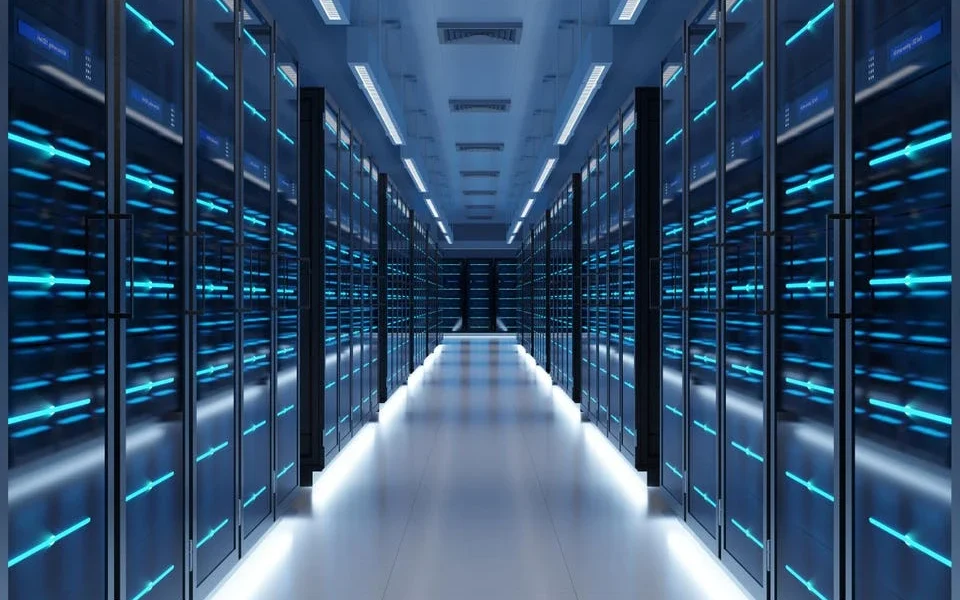Are Data Centers As Carbon Neutral As Possible?
Cloud computing, which has become so central to organizations’ use of computer power and storage, now needs to be assessed on an environmental basis. As 2023 was on track to be the hottest year in history, it’s crucial to reflect on the sustainability of how we source, manage, and maintain one of the world’s most important commodities—information and communications technology (ICT).
Understanding the Impact
The consensus is that global greenhouse gas (GHG) emissions from ICT are about 2.8% of the total per year. This includes a variety of sources, from work laptops to enterprise usage, indicating the significance of this contribution. Cloud computing, in particular, has emerged as a pivotal player in providing computer power and storage, demanding a closer evaluation of its environmental impact. According to the International Energy Agency (IEA), global data center electricity consumption was estimated at 240-340 TWh, accounting for approximately 1-1.3% of global final electricity demand in 2022. This substantial figure emphasizes the need for assessment and Action to address data center emissions.
Leveraging Cloud Computing for Lower Carbon Emissions
It is always better to store data in the Cloud than on specific hardware at home or in a company building from a carbon emissions standpoint. However, there are additional considerations beyond data center electricity consumption. The power used in the networks to transmit data in and out of these sites should also be factored into the evaluation. The increase in global internet traffic and the expansion of data centers and data transmission networks have contributed to 1% of energy-related GHG emissions, underscoring the significance of these factors. This emphasizes the need for a comprehensive approach to achieving carbon neutrality in data center operations.
Addressing Structural Challenges
The location of data centers can significantly impact their environmental footprint. Data centers typically need to be situated where people live to ensure low-latency access, particularly in mission-critical scenarios such as financial trading or online banking. This requirement often leads to placing data centers in urban areas with high power demands, adding stress to the grid. Furthermore, the need for mechanical cooling further amplifies the power requirements in these settings. This highlights the challenges posed by structural aspects of delivering ICT and the subsequent environmental impact.
Evolving Data Center Infrastructure for Efficiency
The data center industry has made significant strides in optimizing heating management to enhance efficiency. Innovative techniques like “hot and cold aisle” layouts have become standard practice, creating a more targeted approach to cooling. Additionally, major public cloud providers are actively advancing hardware designs for increased efficiency and reduced operational carbon overhead. The adoption of ARM-based designs, such as the amazon Graviton, demonstrates this commitment to driving down carbon emissions through technology innovation. These advancements pave the way for more sustainable data center operations, reflecting a shift towards a greener, more efficient approach to ICT infrastructure.
Optimizing Software for Climate Conscious Operations
Beyond hardware advancements, the software running on these efficient platforms plays a pivotal role in achieving sustainable operations. Cloud-based software must align with energy-efficient principles to promote an environmentally conscious approach. Specific instances of software optimization, such as the use of graph database technology, have demonstrated the potential to optimize infrastructure and reduce memory requirements. By focusing on optimized software and efficient hardware, organizations can establish a virtuous green data center circle, promoting low-power, sustainable processing powered by renewable energy sources. Moreover, in cooler climates, data centers can harness waste heat as an asset, contributing to local energy solutions. These measures introduce a transformative approach to energy consumption and ensure a more sustainable future for data center operations.
Embracing a Green Future
The convergence of advanced hardware designs and climate-conscious software solutions presents a compelling opportunity to redefine data center sustainability. By capitalizing on innovative technology and pursuing energy-efficient practices, organizations can cultivate a circular economy for data center operations. This holistic approach, combined with the utilization of renewable power and the adoption of free cooling in appropriate climates, aligns with ESG (Environmental, Social, and Corporate Governance) objectives, further strengthening organizations’ environmental commitments. As we navigate the technology landscape, it’s imperative to embrace these advancements and strive to make the next decade a defining era for sustainable data center operations.
Conclusion
In conclusion, the evolution of data centers and Cloud computing presents a pivotal juncture in steering ICT operations towards carbon neutrality. As the global community confronts the pressing challenges of environmental sustainability, the commitment to greener data center operations assumes paramount importance. The convergence of efficient hardware, climate-conscious software, and sustainable energy sources offers a compelling framework for organizations to embrace sustainable practices. By harnessing these innovations and leveraging data center resources in a conscientious manner, we can chart a course towards a more environmentally responsible future for Cloud computing and data center operations.
Source: forbes








No Comments